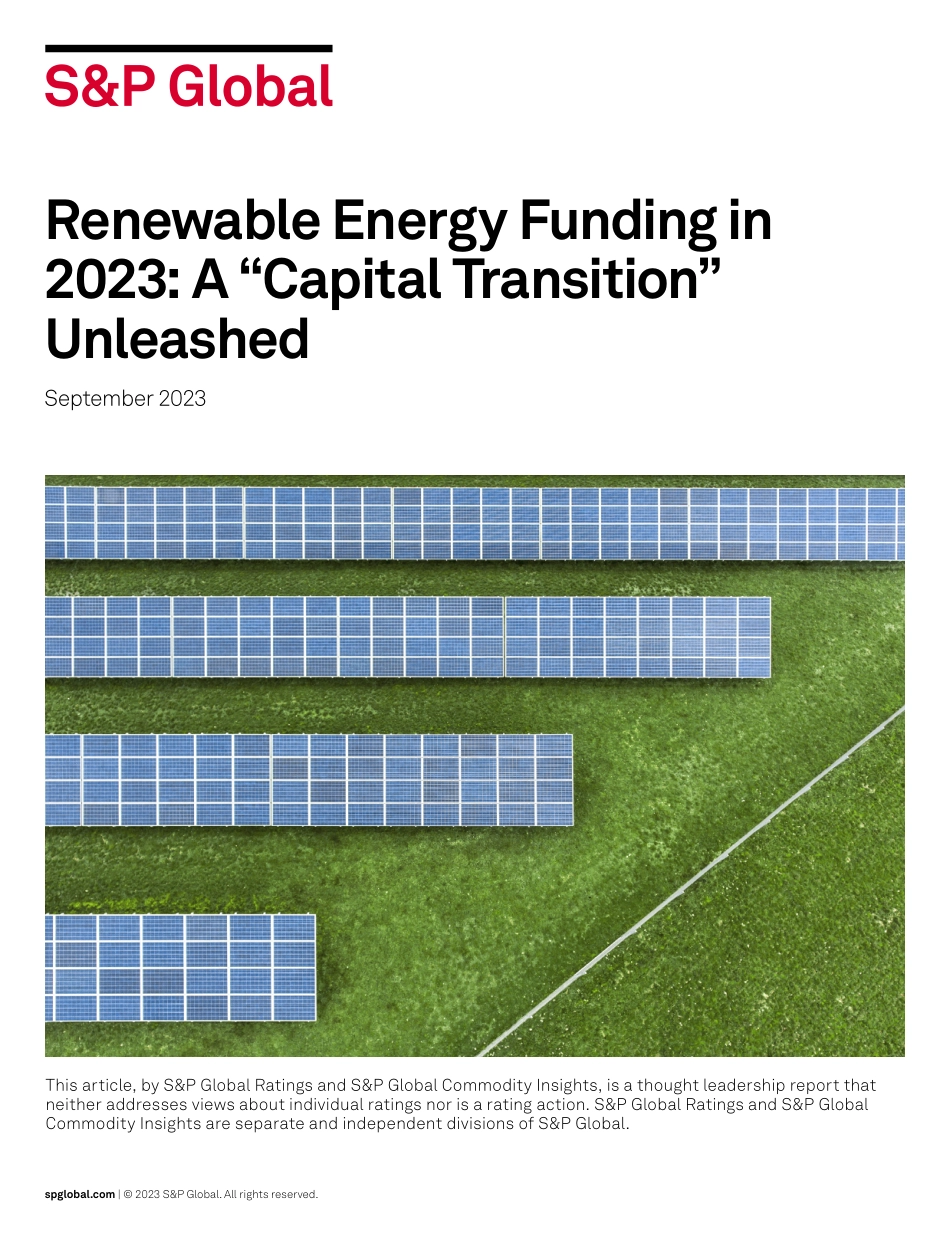Renewable Energy Funding in 2023: A “Capital Transition” UnleashedSeptember 2023spglobal.com | © 2023 S&P Global. All rights reserved.This article, by S&P Global Ratings and S&P Global Commodity Insights, is a thought leadership report that neither addresses views about individual ratings nor is a rating action. S&P Global Ratings and S&P Global Commodity Insights are separate and independent divisions of S&P Global.Capital Transition Unleashed | 2Key Takeaways1. International Renewable Energy Agency (IRENA) World Energy Transitions Outlook 2023, www.irena.org.– Many governments around the world have been making progress mobilizing public and private capital to accelerate the energy transition, with significant money inflows into projects in recent years. These inflows are necessary to meet the tripling of funding needs for low-carbon projects across sectors by 2030 to meet 2050 net-zero goals.– These inflows are particularly pronounced in the United States, China and the European Union – responding to high-level policy goals, yet executed through distinctive financing channels. These achievements, however, still fall short of what is needed to meet net-zero greenhouse gas emissions goals as laid out in the Paris Agreement – particularly given lower activity outside these key regions. – We see capital flows currently strongly favoring renewable power generating assets, namely wind and solar, with less focus on, for example, transmission and storage. This dislocation between policy intent and current investment is likely to result in integration bottlenecks and dysfunctioning energy markets unless market design evolves quickly. – Adapting policies and regulations also comes with risks for developers and investors, with reduced visibility and predictability in market forecasts.IntroductionNational governments and global financial institutions have placed capital allocation at the heart of their energy and industrial policies to accelerate and shape the energy transition. Governments are turning to capital markets because of the immense scale of investment expected to be needed in the coming decades. It its estimated that current targets agreed to by the world’s major economies under the Paris Agreement would require at least tripling of global energy transition investment (including all decarbonization) to more than $5 trillion each year between 2023 and 2050, well beyond what government balance sheets can handle alone. Investment in renewable generating assets is a key part of the transition, with estimated annual investment of $1.4 trillion1 through 2050. AuthorsS&P Global RatingsTrevor D’Olier-Lees | Gonzalo Cantabrana Fernandez | Aneesh Prabhu | Laura Li | Pierre Georges | Evan GunterS&P Global Commodity InsightsPeter Gardett | Roger Diwan | Eduard Sala de Vedruna | Chris DeLuciaContributorsAngela Long | Carla DonagheyGovernments are turning to capi...


